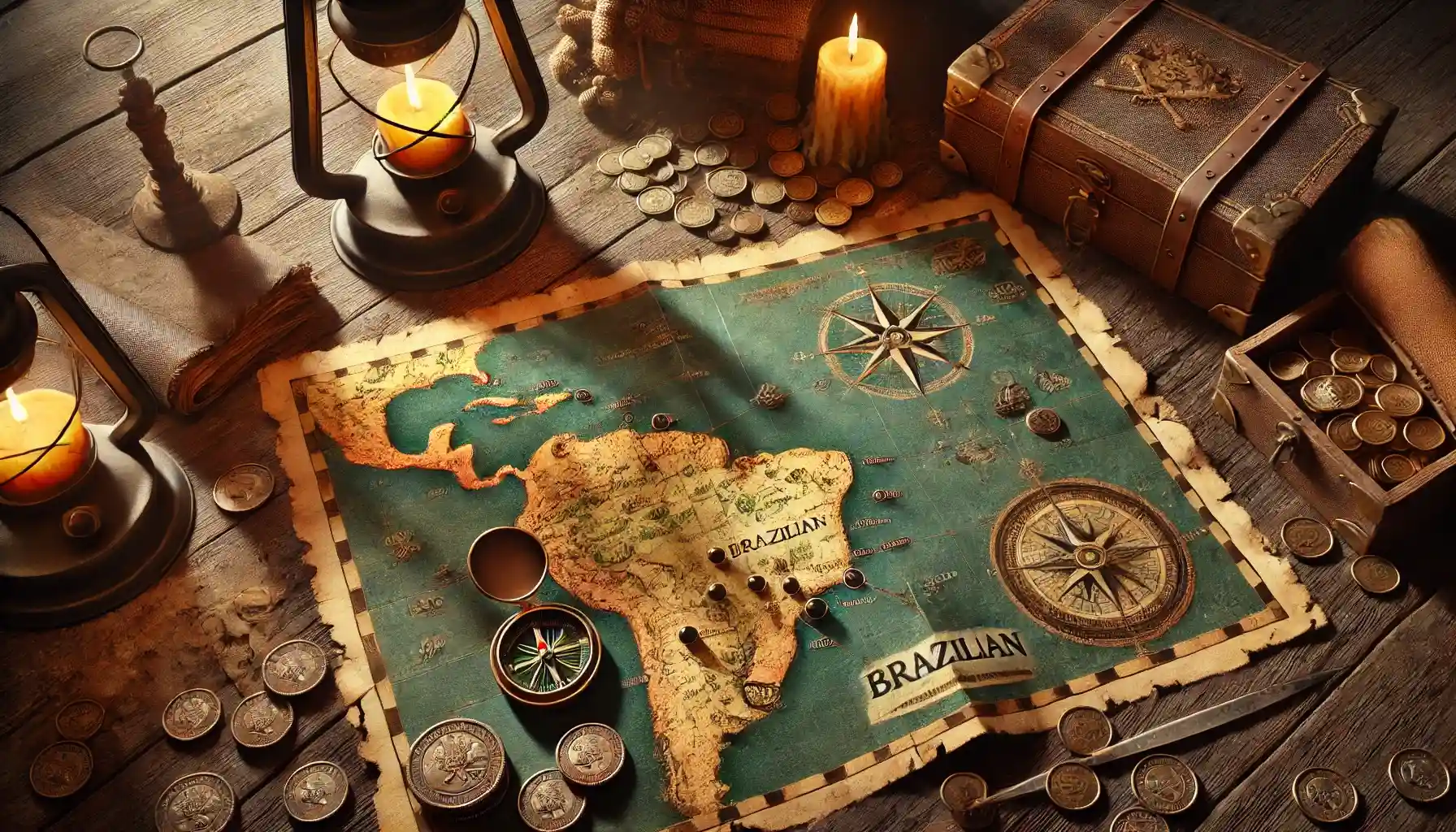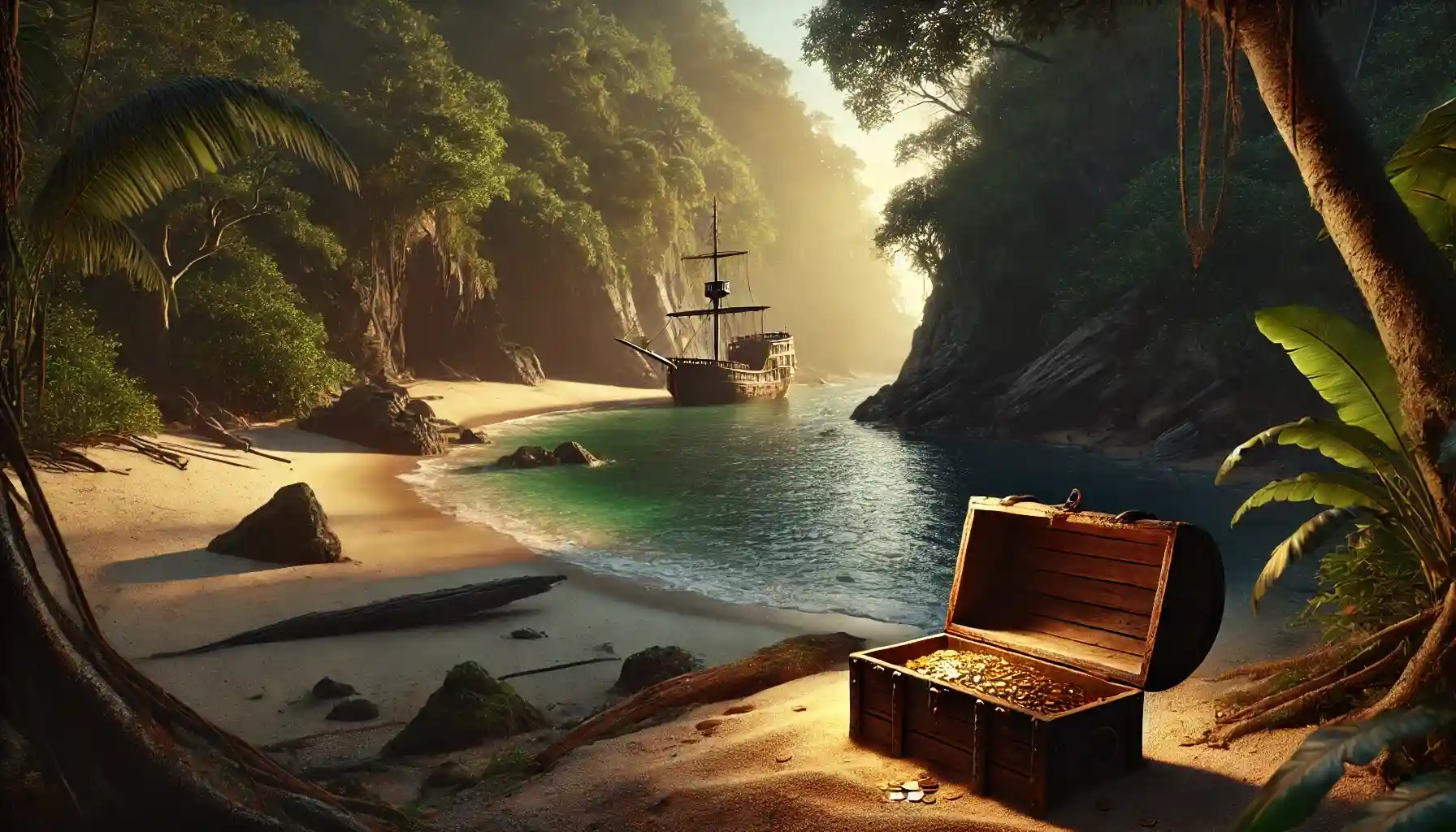Pirate stories have always attracted people – mysterious maps, chests of gold, ghost ships. We used to think that piracy only existed in the Caribbean, but Brazil was also a place where many exciting events unfolded. English, French and Dutch corsairs regularly plundered the Portuguese colonies, and many bays and islands along the coast became their havens. But is it true that there are still riches hidden somewhere? Already willing to undertake an exciting adventure in search of treasure? But how can you tell the difference between myth and reality?
The world is full of stories about hidden riches, but many of them are just beautiful fairy tales that have no basis in fact. This is similar to the situation when collectors come across counterfeit coins: as with pirate treasure, it’s important to understand what’s real and what’s just a clever fake. Just as in numismatics, where knowledge of how to spot fake coins is important, understanding the history of pirates helps distinguish real finds from fakes. So let us find out where exactly the corsairs hid off the coast of Brazil and whether there is a chance to find their hoards today.

Historical Facts: Piracy off the Coast of Brazil
Portuguese Brazil was a tidbit for pirates in the 16th and 18th centuries. The sea routes used by the Spanish and Portuguese to transport gold, silver, precious stones, sugar and rare goods. This attracted the most notorious sea robbers of their time: the English, French and Dutch.
Piracy was especially active in the late 16th and early 17th centuries, when European powers were engaged in a fierce struggle for colonies. During this period there were dozens of attacks on ports, merchant ships and entire cities.
Who was plundering Brazil?
- French privateers – were the first to attack Portuguese settlements, especially in the Rio de Janeiro area.
- Dutch pirates – actively seized territories in the 17th century, including in Pernambuco.
- English corsairs – known for attacking merchant ships and smuggling rare goods.
One of the most famous pirates operating off the coast of Brazil was Jean-François Duclas, a French filibuster who attacked Portuguese and Spanish galleons. He is credited with the capture of many ships, as well as the creation of secret gold chambers. Historians suggest that some of the looted riches may indeed have been hidden in the caves and bays of the coast. But have these treasures survived to this day?
Where Pirates Hid Off the Coast of Brazil: Interesting Details
- The Island of Ilha Grandi (Rio de Janeiro) – A Haven for Smugglers and Pirates
The island of Ilha Grandi, located in the southern part of the state of Rio de Janeiro, was once a true paradise for pirates. Its strategic location near trade routes leading to the largest ports in South America made it an ideal place to rest after the raids.
In the 16th and 18th centuries, pirate ships often entered the island’s secluded coves to hide from pursuers, replenish water and food supplies, or hide loot. Trails hidden in dense rainforests allowed smugglers to easily transport goods inland, avoiding the attention of Spanish and Portuguese authorities.
What to see on the island today?
- The ruins of the old Candido Mendes prison are one of the island’s darkest sites, surrounded by dense jungle. It attracts lovers of history and mysticism.
- Caves with pirate legends – locals say that this is where chests of gold and silver may have been hidden.
- Shipwrecks – there are several ships resting on the seabed near the shores of the island. Diving in these places is a great opportunity to see traces of the pirate past.
Tip: If you want to truly experience the atmosphere of a pirate island, head to Laguinha Bay. Here you can hear local fishermen’s stories of lost treasure and sometimes even find an ancient coin in the sand.
- Recife and Olinda: Towns Attacked by Pirates
In the 17th century, Recife and Olinda were among the main targets of pirate raids in Brazil. These cities were on the route of the most important maritime routes, and their rich markets and warehouses with goods from Europe, Africa, and Asia attracted both English and Dutch pirates.
In 1624, Dutch privateers led by Piet Hein captured Olinda and Recife and used them as bases for attacks on Portuguese ships. Later, in 1645, the locals rebelled and regained control of the towns, but the threats of pirate attacks persisted for several more decades.
Today, you can tour the ancient forts built for defense against pirates. The most famous is Fort Orange on Itamaraca Island, built by the Dutch. You may also be interested in Olinda’s colonial streets with cobblestone roads and old mansions (you can even see houses that survived pirate attacks). Also, if you are exploring the town, you may also check out the local markets (where you can find old coins, antiques and traditional handicrafts).
Interesting fact: In 2019, archaeologists discovered the wreckage of a 16th century Spanish galleon off the coast of Pernambuco. Among the finds are silver coins and ancient weapons.
- Paraty Is a City of Pirates and Smugglers
Paraty, located between Rio de Janeiro and São Paulo, was one of the key points on the Golden Route, the route by which Brazilian gold was shipped to Europe. Galleons loaded with precious metals often stopped here (making the city an attractive target for pirates).
To protect themselves from attacks, the authorities built an elaborate system of trails to smuggle gold inland. However, pirates repeatedly found ways to intercept the precious cargoes. Even centuries later, gold coins dating back to that era were found around Paraty.
What to see today: The historic center with well-preserved architecture of the XVIII century; secret paths where smugglers transported gold; underwater archaeological sites in the bays.
Lifehack: At low tide in Paraty you can find interesting finds right on the beach. Sometimes among the rocks there are fragments of pottery and even old coins. And if you are interested in numismatics or just want to learn more about coins found in Brazil, use the Coin ID Scanner app to help you recognize your finds and determine their history!
Legends of Hidden Secrets: Pirate Treasure off the Coast of Brazil
Stories of hidden pirate treasures are passed down from generation to generation, becoming true legends. Due to these tales people and adventurers are always inspired to search for gold hidden in caves, on islands, and even at the bottom of the ocean. While many of these stories remain myths, archaeological discoveries prove that pirate treasure chests may have actually existed.
The most famous pirate hoards off the coast of Brazil
| The name of the treasure | Legend | Where to look |
| The Treasure of Captain Roche | Legend has it that a Portuguese pirate hid a chest of gold in the coastal caves of Pernambuco to escape pursuit. In the 1920s, fishermen claimed to have found ancient coins there. | Beaches and caves in the Recife area. |
| Treasure of Jean-François Duclasse | A French privateer attacking Spanish galleons may have left some of his booty on islands near El Salvador before his ship was sunk. | The islands of Bahia de Todos los Santos. |
| Stash at Santa Catarina | In the 19th century, old coins and artifacts were found on the island. They may have been left by pirates hunting Portuguese galleons carrying gold. | Florian neighborhood |
Although many stories of treasure remain only beautiful legends, archaeological findings confirm that the Brazilian coast was indeed a place of active pirate activity. According to Brazilian archaeologists, more than 20 shipwrecks believed to be associated with pirates and privateers have been found off the country’s coast. Many of them contained silver and gold coins.

Legends Live, Treasures Wait
The Brazilian coastline holds many stories of daring pirate raids and shipwreck finds. Who knows, perhaps somewhere among the sandy beaches and coastal caves there really are hidden treasures of the past? But one thing is certain: even if the hoards of captains long gone into legend, interest in them does not fade. And maybe it is you who will one day find a coin with a mysterious story – by chance or with the help of modern technology.





